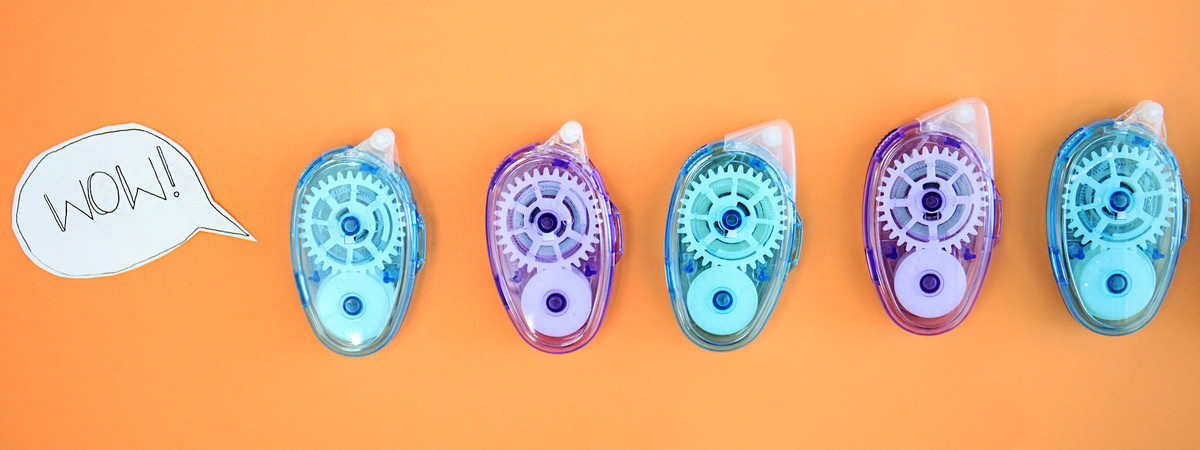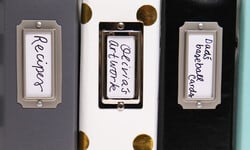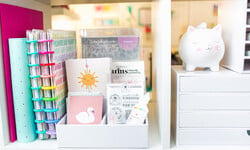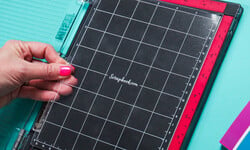We crafters know the importance of adhesives when it comes to papercrafting. From tape rollers to liquid glue, double sided rolls and hot glue, to decorative washi tape, there are many different kinds of items that fall under the category of glue and adhesives.
We may know the whens, whys, and hows of adhesive application in regards to our papercrafting projects, but we bet you might be surprised by more than a few of these lesser-known adhesive facts we've managed to uncover!
Glue yourself to the nearest chair and stick around for 10 things you didn't know about adhesives!
1. There is a Difference Between Glue and Adhesive
The terms glue and adhesive are oftentimes used interchangeably, however there actually is a difference between the two, linguistically speaking. When it comes to the name, "glues" are technically made with natural materials, such as animal byproducts and resins. "Adhesives," according to the definition, are created with synthetic, man-made materials.
Though this is true, companies often also use the words interchangeably, so don't take this as a definitive rule when it comes to terminology! If you're ever concerned about what your glues and adhesives are made out of, never hesitate to read the label or contact the company directly.
2. Historically, Glue Was Made From Fish
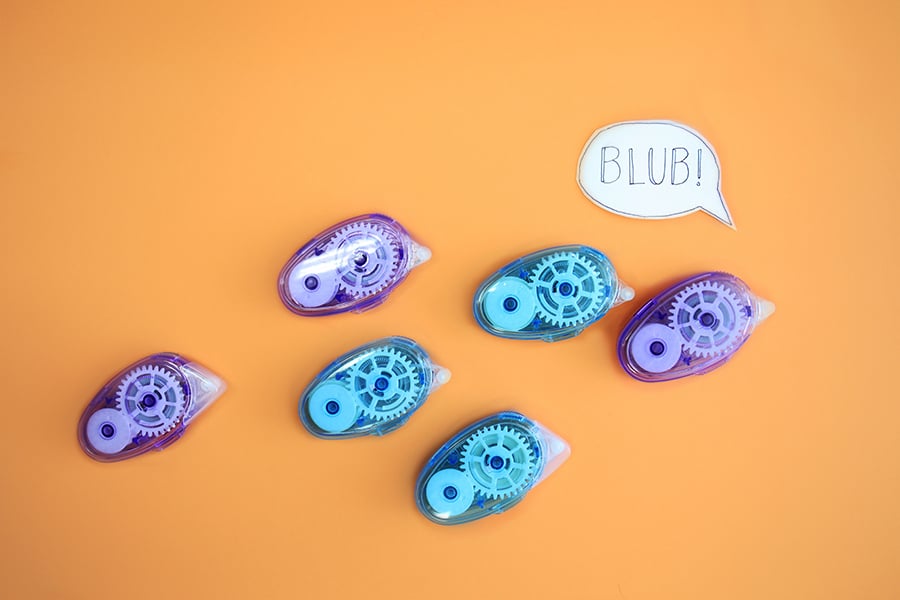
Throughout time, glue has been made with a sprinkling of seemingly random materials. From tree sap and beeswax, to egg whites and animal blood... and surprisingly fish. The first commercial glue company within the United Kingdom, in the 1700s, created glue from our aquatic acquaintances, sturgeons.
Most of us have heard that glue is made from horse hooves, and though this has truth to it when looking throughout history, these days most glues are created with man-made materials and/or an animal byproduct, such as milk.
Even Elmer's Glue, which was originally created with casein (the protein found in cow's milk, hence why the cow is their symbol), is now made entirely out of synthetic materials.
3. Duct Tape Was Created For WWII Troops
Duct tape is a favorite throughout the world due to its strength, long-lasting quality, ease of use, and its waterproof nature - but it didn't always start out that way.
On the battlefields in World War II, troops often had to repair machines, weapons, even battle wounds, at a moment's notice. Heavy tape alone was not doing the trick, as conditions were often rainy and wet. Therefore, Duct Tape was created - a thick, waterproof tape that was sure to help the troops in their unplanned, but necessary repairs.
4. Duct Tape Was Actually Called Duck Tape
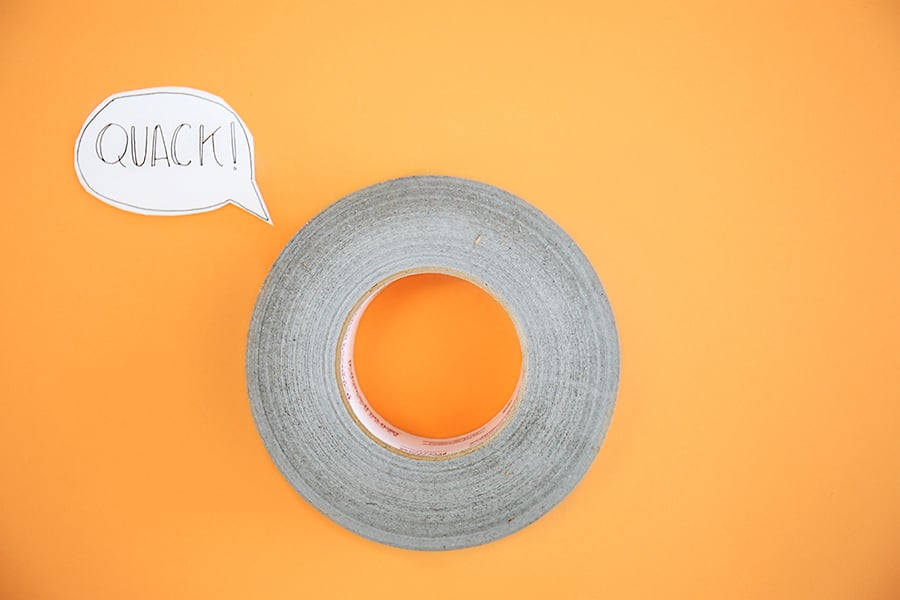
If you've ever had someone laugh at you for accidentally calling Duct Tape "Duck Tape," you're not alone. And, you're also not wrong. Originally, Duct Tape was called Duck Tape, due to its waterproof characteristic: "like water off a duck's back." Plus, it was made from duck cloth. The name was only revised when the company later changed hands and the tape began to be used frequently for wrapping air ducts.
Whether you're Team Duct or Squad Duck, nowadays, both are technically correct - as duct tape is made by the Duck Brand.
5. Super Glue Was an Accident
Super glue, scientifically referred to as cyanoacrylate, was not created on purpose. In 1942, Dr. Harry Coover was trying to create a clear plastic for gunsights to be used in the war. During his testing and experimenting, he accidentally created cyanoacrylate - more commonly known as super glue. Though you'd assume he'd be happy about this serendipitous moment, he was not. He was annoyed by how relentlessly sticky this new substance was.
He didn't realize it could be a very helpful phenomenon until years later, when accidentally remaking it during the invention of something else. Two time's the charm for Dr. Coover!
6. Not All Glue is Acid-Free
In recent years, many papercrafting companies have learned about the harmful role that naturally-found acids can play on our documents, family photos, and memorabilia over time. In response to that, many companies have created and marketed acid-free papers, stickers, ephemera, and more.
However, more often than we'd like to admit, we forget to check our adhesives! Many adhesives still contain acid, so make sure you always check the label for words like "archival" or "acid free." We recommend these acid-free adhesives for all of your papercrafting projects, as it's acid-free, extremely sticky, and surprisingly affordable.
Read more here about why you should only use acid-free materials in papercrafting.
7. Glue Saves Penguins' Lives
When a penguin is nestled in its fragile egg, it always runs the risk of getting a small crack or fissure, subsequently resulting in the tiny chick not surviving past birth. However, some small cracks and fissures can be and have been fixed with the help of liquid glue! Elmer's Glue, for example, is strong enough to fill in the small cracks on a delicate egg, but weak enough for the baby penguin to still miraculously emerge when he or she hatches!
Thanks to liquid glue, we have more penguins in the world. And who doesn't love that?!
8. Glue Holds a Guinness World Record
Okay, so it's not actually held by "glue," but it's about glue! In September of 2013, the German Aerospace Center succeeded in establishing the new world record for the heaviest weight ever lifted by glue - and it's wildly impressive, to the point of feigning disbelief.
A 15.5 x 15.5 square inch of a glued area managed to lift 16.09 tons. That's 35,472 lbs and 6.4 oz! Now the important follow-up question: how many scrapbooking supplies would 16 tons look like?!
9. Lipstick Inspired the Glue Stick
The glue stick was invented in 1969 after a German company was inspired by the easy application of lipstick. With its easy twist-up function all contained in a capped tube, this was a whole new world for adhesives. They say that life is short, so buy the lipstick - but we crafters will take a glue stick too, please!
10.Geckos Are Teaching Glue Developers
We've all seen lizards and geckos scurry up the side of a wall, or stay put on one for hours at a time. It's an amazing feat, due to the tiny, sticky hairs on the bottom of their feet! These little hairs are super sticky and much stronger than our stickiest synthetic glues. Each square millimeter holds 14,000 or more of these tiny, adherent hairs, allowing geckos to grip onto walls effortlessly, for as long as they'd like.
Glue researchers and developers are trying to learn by studying Geckos to create something similar, synthetically, to create better, stronger, more long-lasting glue! We crafters can all cheer to that!

